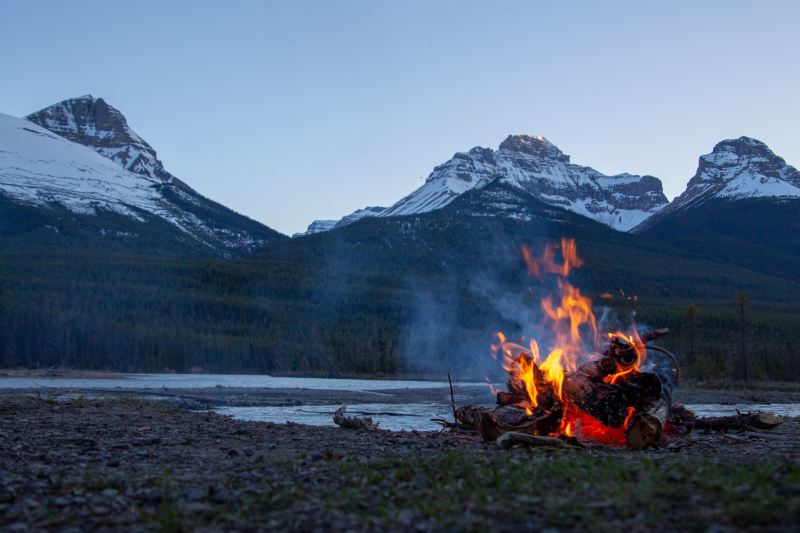
When you’re out camping, and the temperatures start to drop, a campfire is a must. But what do you do when you don’t have proper fire-starting materials, and you can’t get to a store? This new hand sanitizer camping hack might just be the game-changer you need to get that fire started, and it might just be better than our phone battery hack.
That said, it’s crucial to approach this method with caution. Hand sanitizer is not intended for fire starting and is dangerous to handle around an open flame. Here at the Manual, we recommend preparing safe fire-starting materials before you face the chilly weather so you do not risk burning yourself or your loved ones with dangerous TikTok hacks. However, in a dire emergency situation, it might come in handy.

How to start a fire with hand sanitizer
Select the right location
Before you begin, choose a safe location for your campfire. It should be away from tents, trees, and other flammable materials. Most campsites have designated fire areas. If you’re in the wilderness, clear a space free of debris and create a ring of rocks to contain the fire.
Gather materials
You will need:
- Hand sanitizer
- Candle lighter
- Tinder (small twigs, dry leaves, cotton ball, or paper)
- Kindling (small sticks)
- Firewood
It’s important to note that not all hand sanitizers are equal. Some do not use alcohol as an active ingredient, so evaluate the percentage beforehand. Formulas with a higher percentage of alcohol will burn faster, so you may need more tinder to set the kindling on fire. We recommend using a fluffed cotton ball for the best results.
Prepare your fire lay
Start by placing your tinder in the center of your fire pit. Around this, build a structure with your kindling. There are several methods like the teepee, log cabin, or lean-to. The key is to allow for airflow while ensuring the kindling will catch fire from the burning tinder.
Apply hand sanitizer
Once your structure is ready, apply a drizzle of hand sanitizer to the tinder. Do not overdo it — a little goes a long way. Ensure you do not get any hand sanitizer on yourself, and never spray directly from the bottle onto an already-lit fire to avoid dangerous flare-ups.
Light your fire
Before you consider striking a match, make sure that you don’t have any sanitizer on your hands. If you do, wait for your hands to dry completely. Then, light your fire. We recommend using a candle lighter with a long barrel so that you don’t risk burning yourself. The fire should catch on the tinder and then spread the larger pieces of wood. Stand back as you light the fire to avoid any toxic fumes or sudden flare-ups.
Once your kindling is burning well, start adding larger pieces of firewood. Place them carefully to avoid smothering the fire. Continue to feed the fire to keep it at your desired size.
Remember, safety and respect for the environment should always be your top priorities when handling fire. Always keep a bucket of water or a fire extinguisher nearby, and never leave your campfire unattended.



